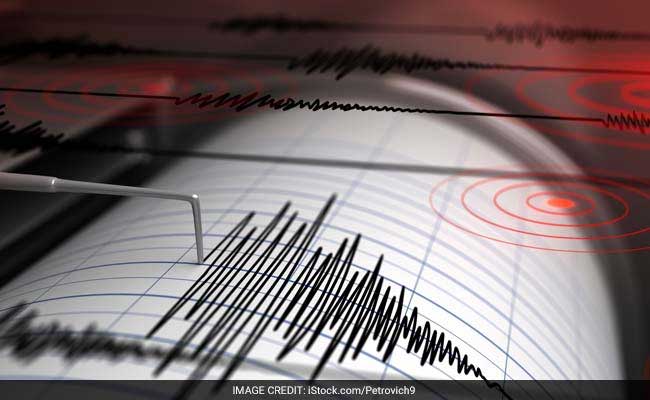Consider weather forecasting. The earth’s atmosphere is a laboratory of randomness, whose conditions change frequently in terms of its pressure, density, the flow-rates of various gases, and temperature. As a result, the paths of gas molecules become increasingly unpredictable. This is why a weather phenomenon that has been predicted to last for a longer period of time is unlikely to be as accurate – or even true, for that matter – for a more intermittent duration.
This is why a simple model that tracks the way heat is moved through the atmosphere can possess a lot of unpredictability. Such notions are captured by the term ‘butterfly effect’ – named for the idea that the mere flapping of a butterfly’s wings in one place can produce a storm somewhere else. This may sound ridiculous but as a metaphor, it has a well-understood scientific basis.
Deterministic chaos
The pinball machine makes for an illustrative example: the motion of the little ball is precisely governed by the laws of gravitation and motion, of rolling, elastic collisions, scattering, etc. – yet it is practically impossible to accurately predict the ball’s position at a given moment (well after someone starts playing it). Such systems are said to be classically chaotic because of their apparently unpredictable behaviour even though they are governed by deterministic physical laws.
In fact, a more appropriate term that defines such systems would be deterministic chaos. Deterministic chaos essentially means that the future can be predicted only if the present is known with a great degree of accuracy. However, if the present is known only approximately, the future can’t be predicted. This is also what the term ‘butterfly effect’ stands for: that some system is highly sensitive to its starting conditions. Even a small change in these conditions can produce disproportionately large changes in the way the system evolves.
In Lyapunov time
The mathematics of chaos – as well as its applications, for that matter – is highly diverse. It incorporates the study of such systems as the turbulent flow of fluids, irregularities in the human heartbeat, irregular patterns in the amplitude of sound transmission, trends in population dynamics, voting patterns in an election, power transmission in electrical circuits, chemical reactions, the physics of the state of matter called plasma, planetary dynamics in the inner solar system, and the motion of clusters of stars.
As noted earlier, a chaotic system is very sensitive to its initial conditions and the dynamics thereof. As a result, such a system can seem to behave randomly rather than in a regular manner. The duration for which the system’s evolution will be predictable depends on a few things, such as how accurately and precisely its present state is known, the amount of uncertainty that it can tolerate, and a time factor determined by the dynamics of the system, called the Lyapunov time.
For example, in a chaotic electrical circuit, the Lyapunov time is about 1 ms. For weather systems, it is a few days, and for the inner solar system, it can be 4-5 million years.
Chaos in quantum
Scientists can also approach the inherent uncertainty of physical systems using the tools of quantum theory. Indeed, quantum mechanics can be applied to study everything from the microscopic to the macroscopic domains – but its implications are the most dramatic in the subatomic domain.
Quantum mechanics is probabilistic, not chaotic, as far as we know. This is because there are no point-like locations of subatomic particles in space, so it is meaningless to determine their exact locations at some time and then attempt to determine their locations at a later point. In atoms, electrons exist in a cloud that hovers around the nucleus.
An atom by itself can’t be chaotic but it can be disturbed by applying an electric or a magnetic field. Quantum physics takes care of such mild disturbances using perturbation theory. Chaos, however, is beyond the scope of perturbation theories and warrants a different approach. The branch of quantum physics that studies the dynamics of classically chaotic systems is called quantum chaos.
The Rydberg atom
The hallmark of any quantum system is that its energy can increase or decrease in discrete steps. On the other hand, classical systems can have a continuum of energies.
Now, if an electron is excited to a sufficiently high energy even when it is still a part of an atom, a group of energy levels could get close to each other in a continuous manner – almost creating a continuous energy level. An atom excited in this way, to have a continuum of energies, is called a Rydberg atom, and we can apply the principles of classical mechanics to describe it.
The Rydberg atom is like a link that connects the classical and the quantum domains. If such an atom is made to exhibit chaotic behaviour, it could help scientists provide important clues about the uncharted areas of quantum chaos.
Uncharted territory
Moreover, the chaos in a Rydberg atom doesn’t manifest in the values of the individual energy levels. Instead, its signature can be detected in the spectrum, or the distribution, of these energy levels. Ironically, the energy levels in a non-chaotic quantum system are distributed randomly, without any correlation. But the energy levels in a chaotic quantum system exhibit strong regularities – as if each level is aware of another’s presence and is trying to keep a safe distance.
Quantum chaos is a new and arguably thrilling area of research that’s rich in conceptual, experimental, and computational challenges. It has gained a significant amount of interest in the past decade for its implications in fields like thermalisation and transport, quantum information, and the quantum mechanics of black holes.
Qudsia Gani is an assistant professor in the Department of Physics, Government College for Women, Srinagar.













